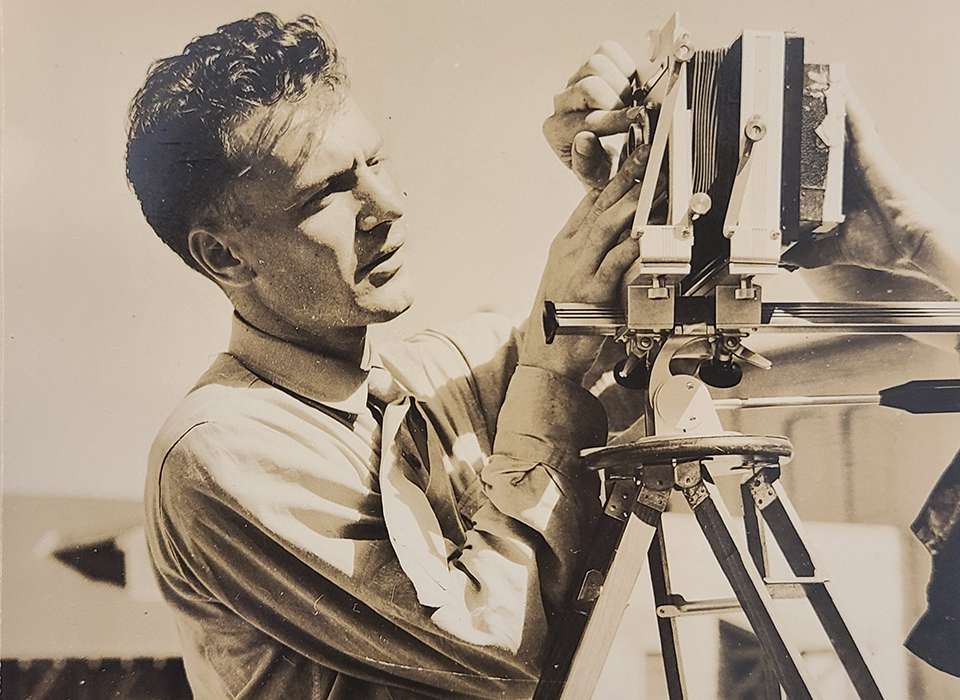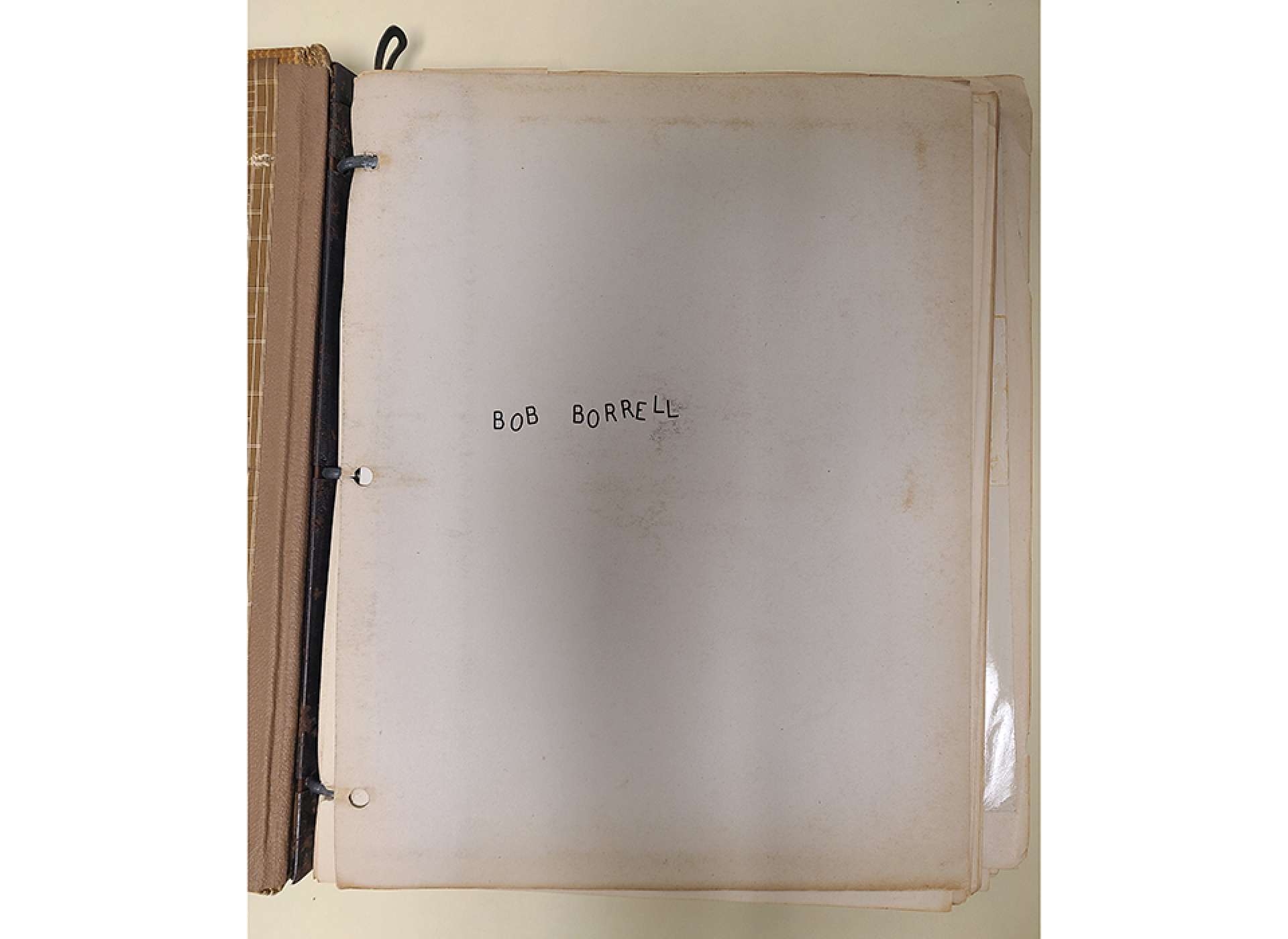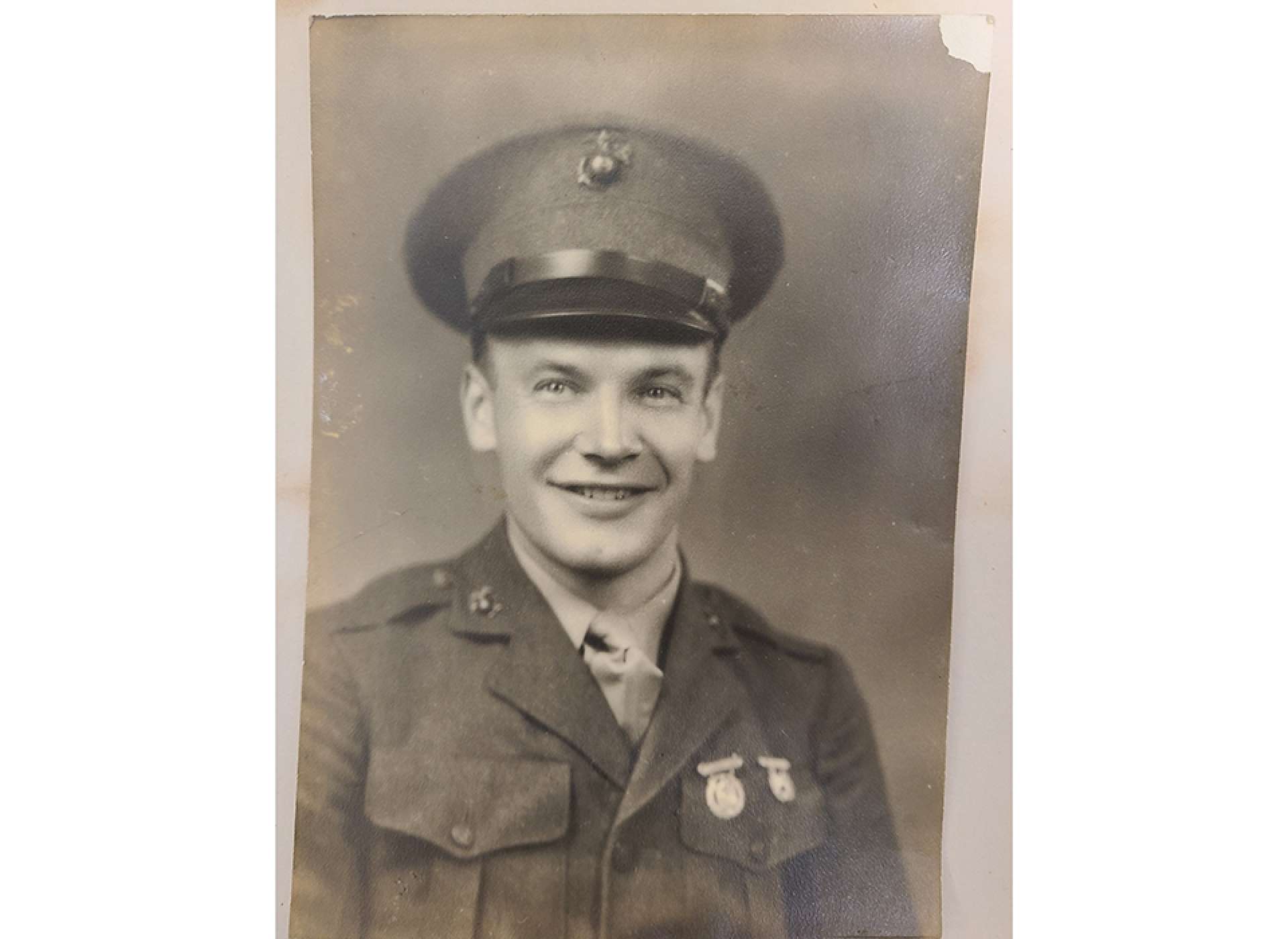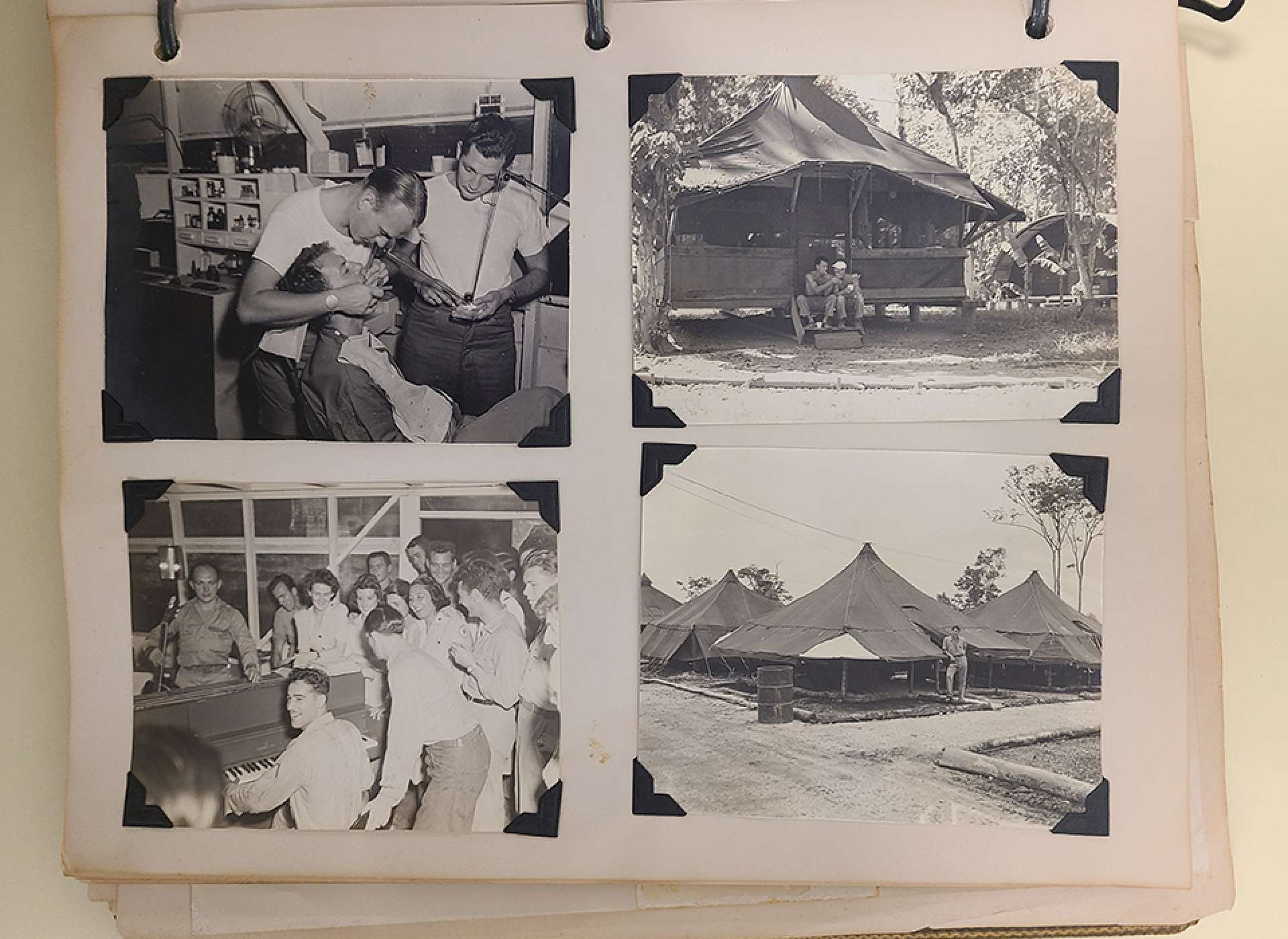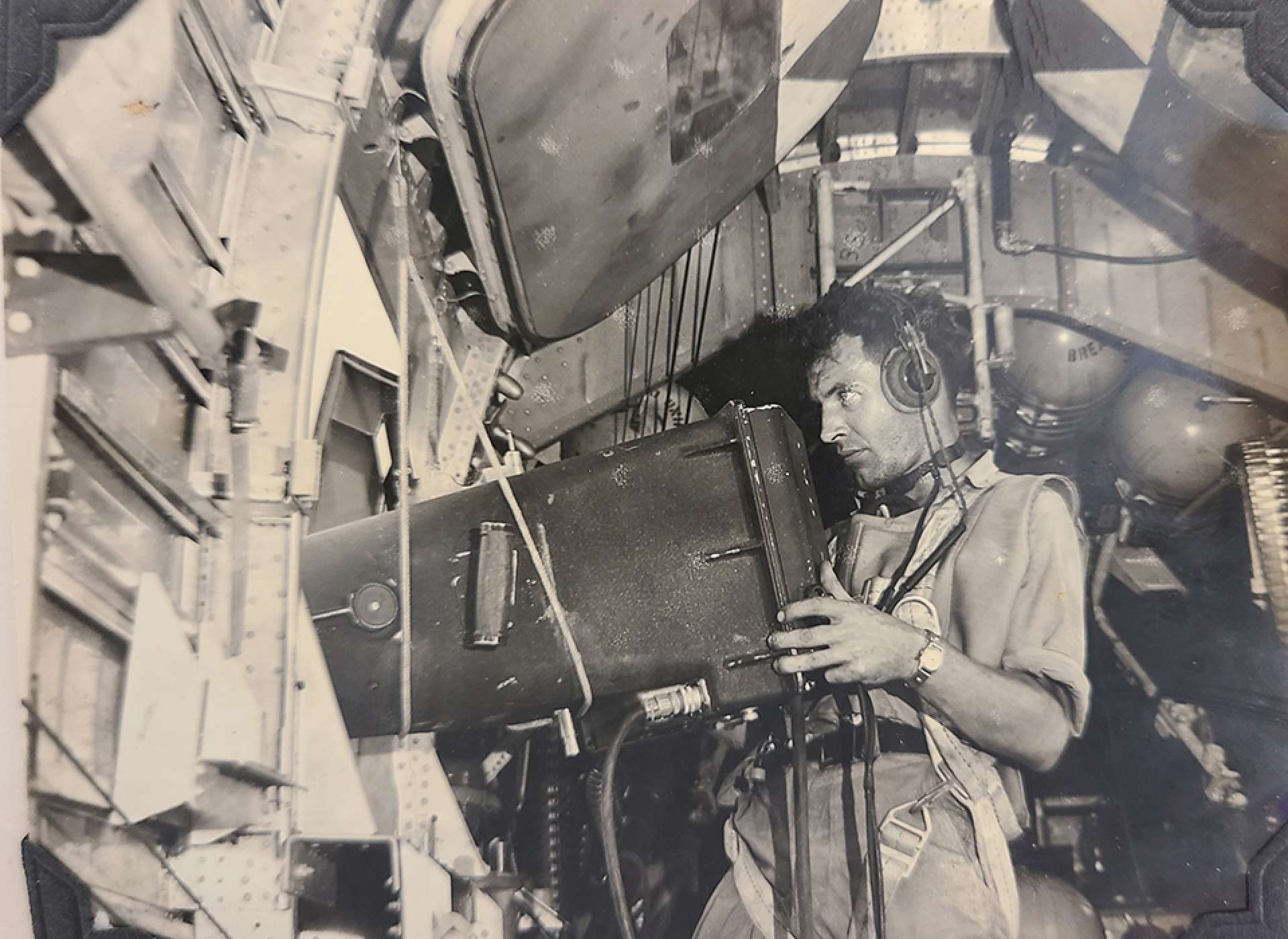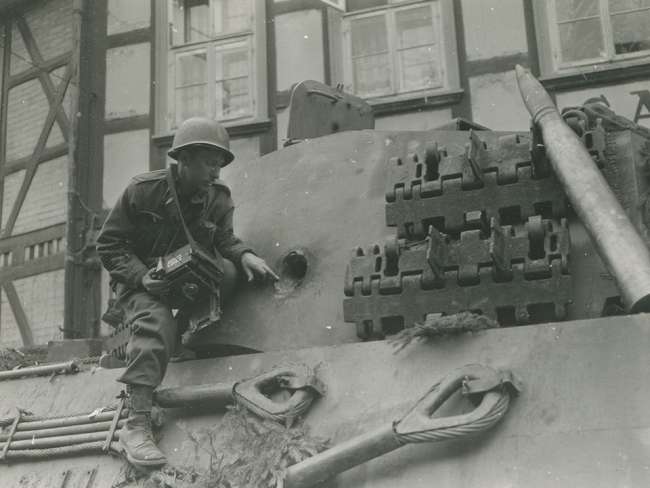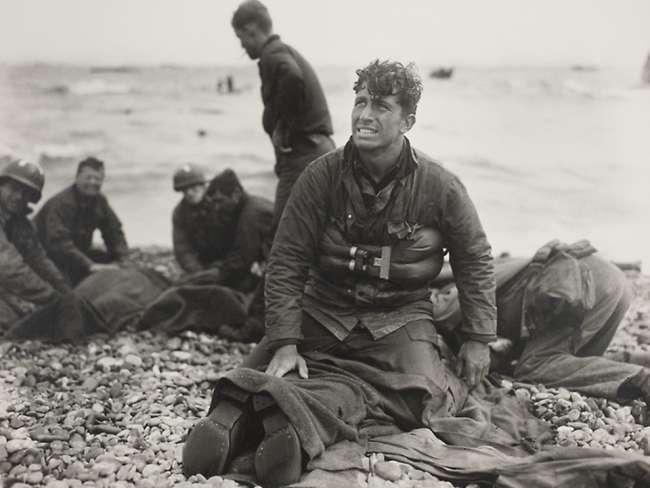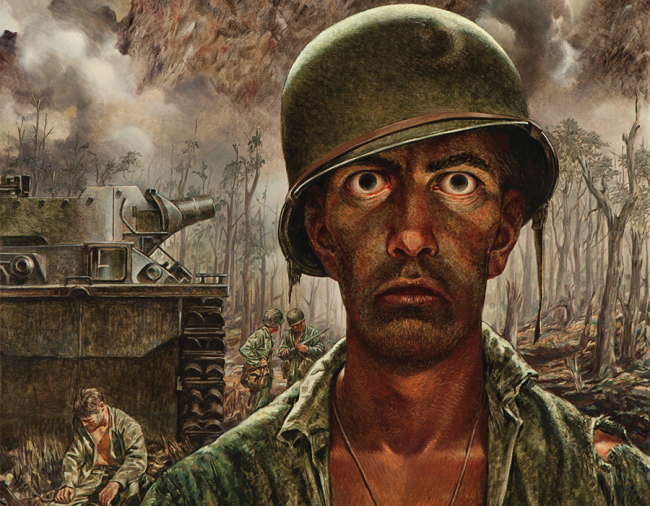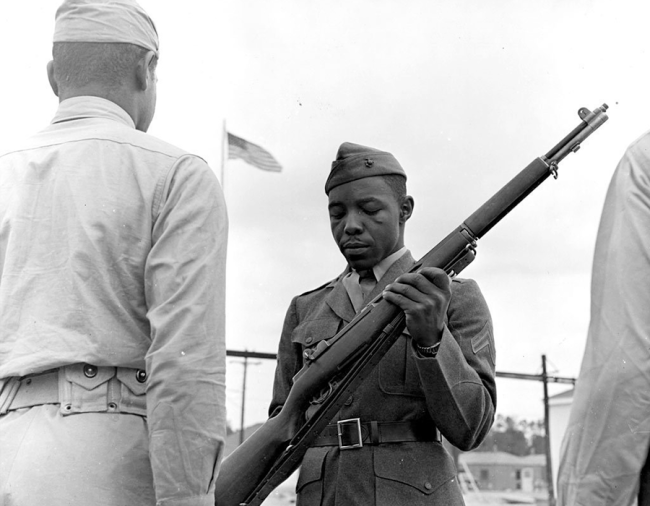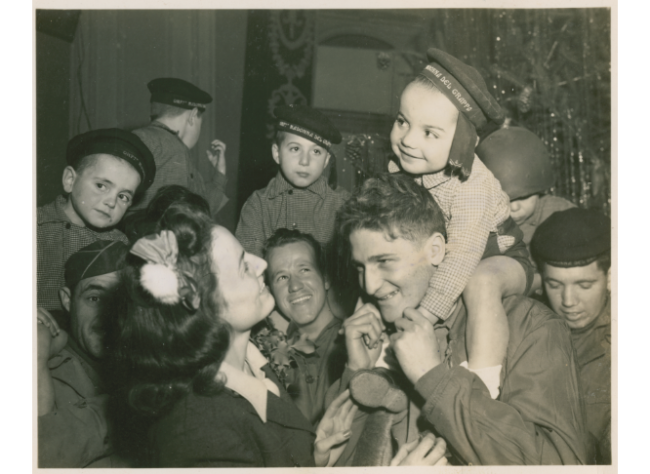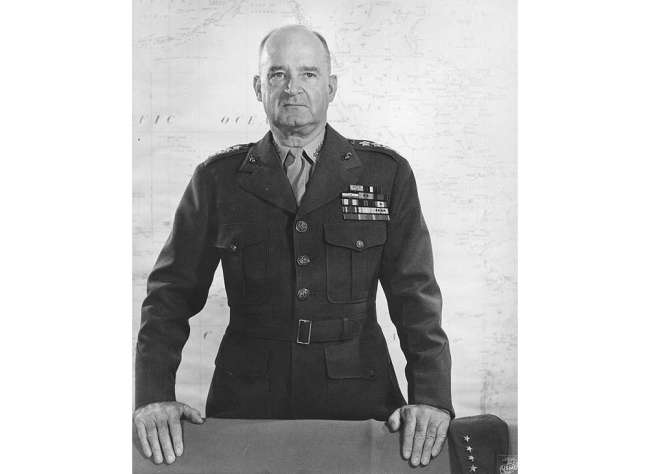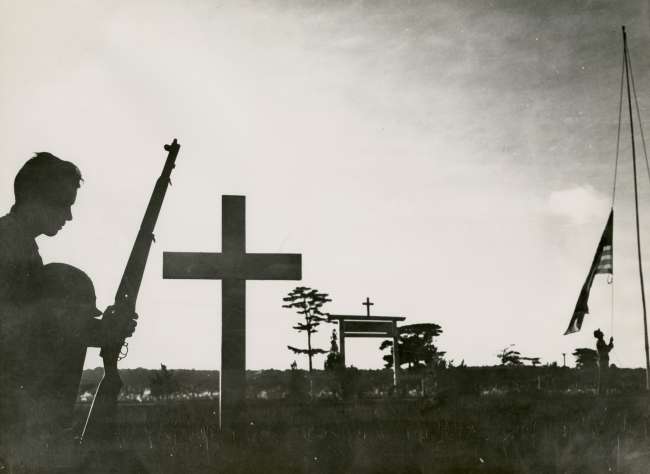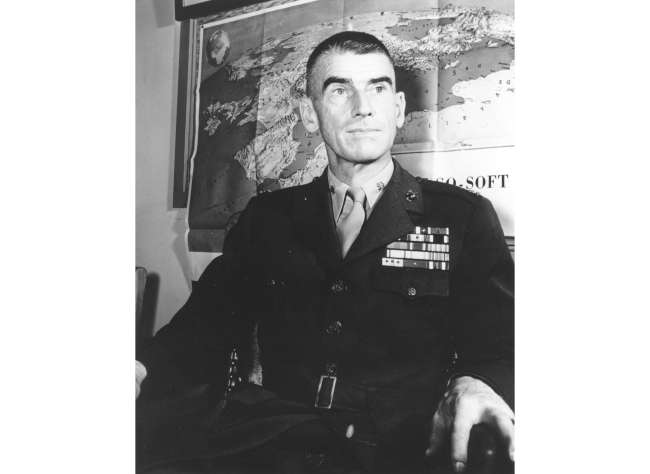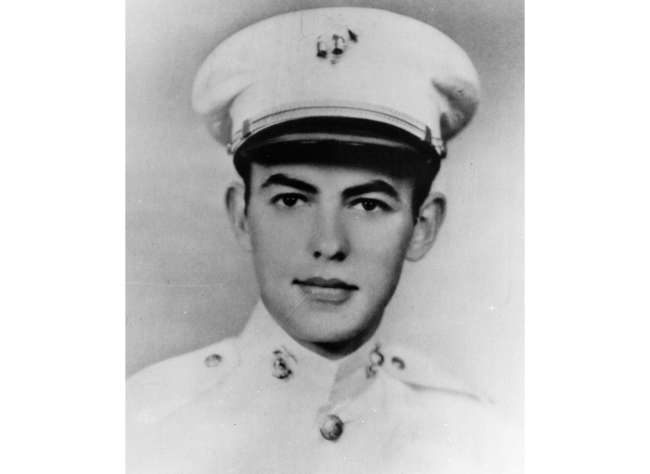Some of the best artifacts are created by people who know what they are doing. One very good example is the photo album of Corporal Robert Borrell, a camera technician and aerial photographer in Marine Photographic Squadron 254 (VMD-254). Borrell’s album makes use of the various cameras at his disposal to record his military service in a way that official documents and action reports cannot. Images often tell stories that were never written down such as living conditions, what uniforms people wore, or what equipment they used. Many service members took photographs during their time overseas, but what makes Borrell different is his skill at composing photographs, the developing and printing equipment at his disposal, and the fact that his job meant he always had a camera on hand to take photographs.
-

The cover page of Robert Borrell’s photo album. In the absence of written details, photographs serve an important role in further interpreting history through visual representation. Behind this almost blank page is a photographic history of one Marine in the Pacific theater. Gift in Memory of Robert Borrell, 2018.213.
-

Portrait of Robert Borrell shortly after completing USMC boot camp. After completing basic training, Borrell was sent to the Navy photographic school in Pensacola, Florida. Gift in Memory of Robert Borrell, 2018.213.
VMD-254 was one of four USMC photographic squadrons created during American involvement in World War II. Equipped with PB4Y Liberators, the naval version of the USAAF B-24, this unit was trained for high-altitude photographic reconnaissance. The photographs were used for naval intelligence, map making, and generally keeping tabs on Japanese forces in the Pacific theater. One of the highlights of VMD-254’s service was the February 4, 1944, mission to the Japanese naval base at Truk Lagoon. This 12-hour, 2,000-mile round trip mission, was the most complete photographic coverage of this major Japanese base to date. These photographs paved the way for Operation Hailstone, a major air raid on the Japanese fleet and proved the existence of Japanese battleships that were in excess of 60,000 tons displacement and armed with an 18-inch main battery.
Robert Borrell was born on July 28, 1915 in Wilmington, Delaware. As a child he moved around with his father who held various jobs in the oil industry. By the time the Japanese attacked Pearl Harbor, Borrell was 26 years old. World War II was not fought by only 18-year-olds, and a man of Borrell’s age really had their life interrupted. They were early in developing their careers and often already married. Rather than going directly from high school to service, men like Borrell were leaving for war knowing it may hurt their livelihood, or even result in being passed up for advancement by a new generation while in service of their country.
Despite the personal risks, Borrell left a job with Standard Oil to enlist in the US Marine Corps on October 9, 1942. After basic training he was sent to the US Navy photographic school in Pensacola, Florida, and eventually to advanced training in camera repair at Fairchild Aviation Corporation. Assigned to VMD-254, Borrell joined the unit on Espiritu Santo in January 1944. During the next 12 months Borrell constantly worked repairing cameras, taking photographs, and developing negatives in support of the almost daily photographic missions of his squadron. Between missions Borrell found time for fishing, working in the camera repair shop, and sightseeing around the base.
-

A grouping of four photographs depicting Robert Borrell’s service. Photographs such as this enable historians to tell part of Borrell’s story, even if he is not here to speak about it. Gift in Memory of Robert Borrell, 2018.213.
-

Robert Borrell operating an aerial camera from a PB4Y. Aircraft were specially equipped for the photographic reconnaissance mission. Large cameras were fitted in the bomb bays and flexible cameras were mounted on the side of the aircraft. These photographs were used for intelligence, mapping, and estimating enemy strength. Gift in Memory of Robert Borrell, 2018.213.
This type of photographic work was routine, and in its routine was its importance. Daily photography of enemy-held islands or anchorages worked to constantly build a picture of Japanese military strength and movements. Because of its rote nature, the overall service of VMD-254 can be summed up in just a few paragraphs. This is why a photograph album can serve as such an important source of information about service and the reason for that is the camera. So much of interpreting history is context. Any information that can help put other material into context, or provide a level of detail that the human memory cannot bring back, is a valuable tool for telling a story. The camera, and photo albums like Robert Borrell’s, are an important tool that is used to tell the story of World War II.
Joshua Schick
Cite this article:
MLA Citation:
APA Citation:
Chicago Style Citation:
